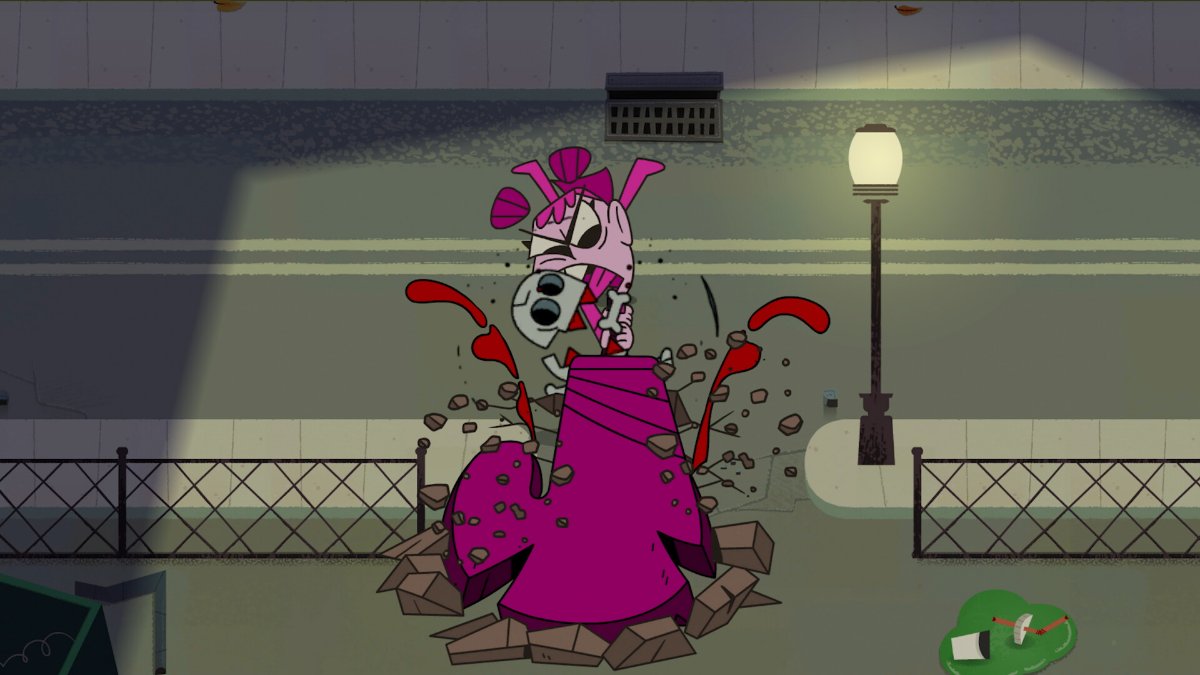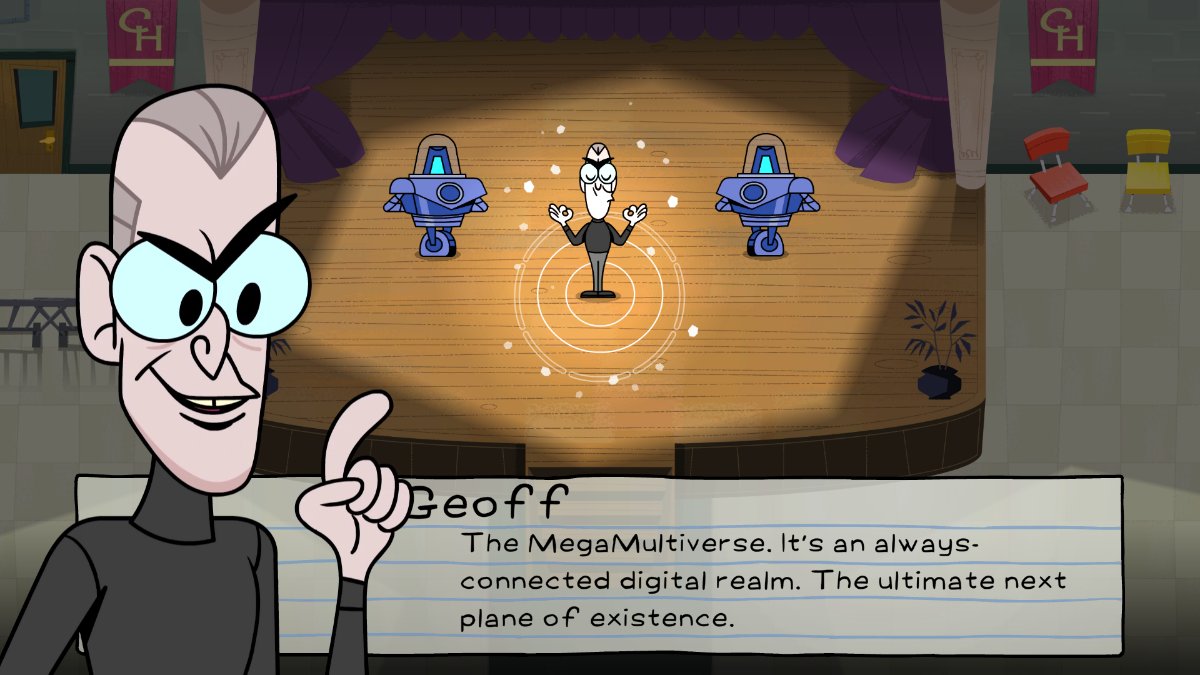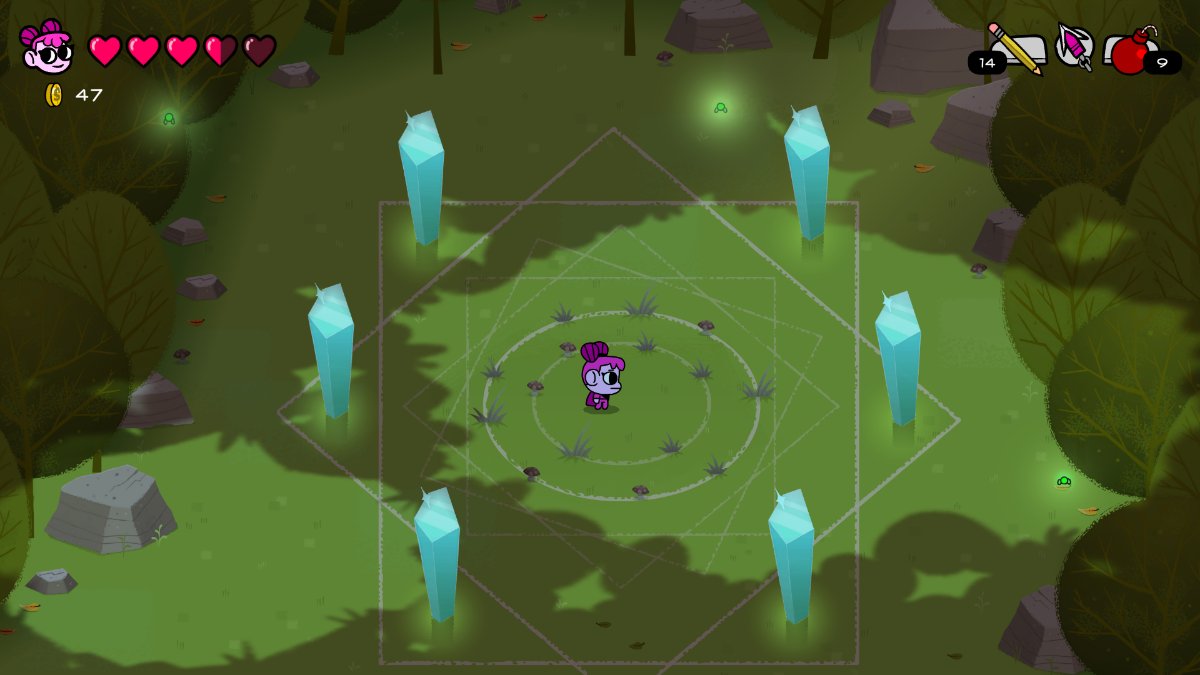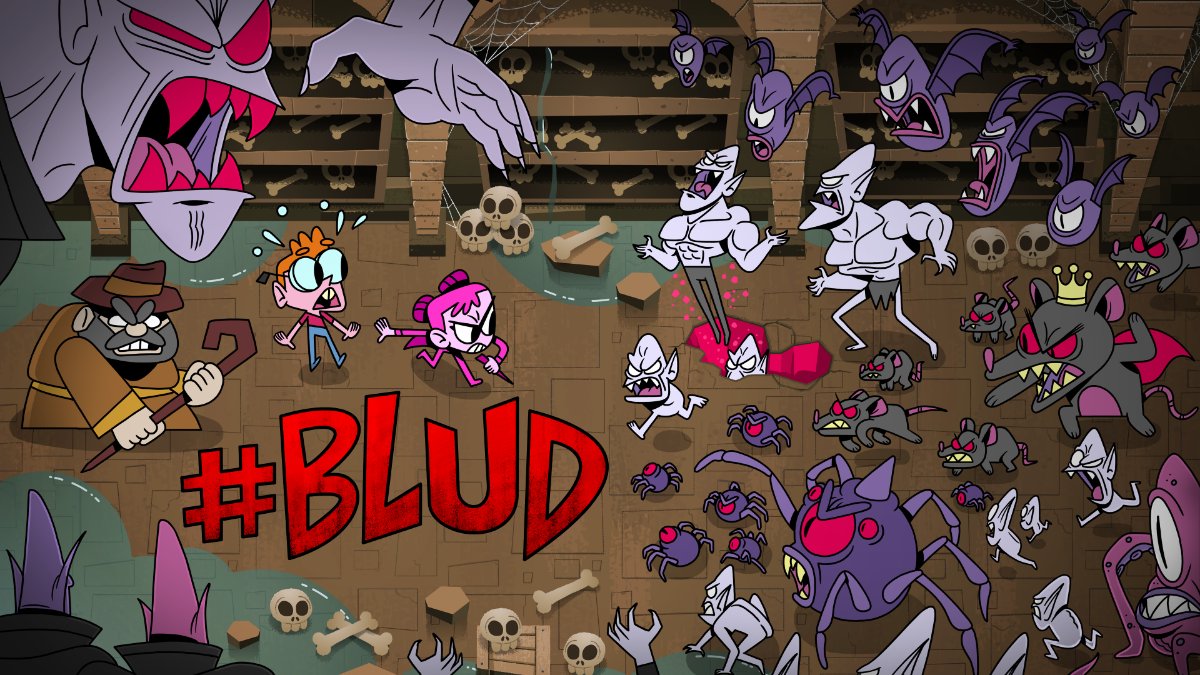#Blud is a comedic action-adventure title about an unlikely vampire hunter fighting the undead and their maniacal billionaire leader. However, I get the feeling that #Blud would find this description missing a vital detail. Its own trailer opens with a proud declaration that this is “not a cartoon, but a hand-drawn video game.” The Steam store description calls it a “dungeon crawler that blurs the line between action RPGs and hyperkinetic 90s cartoons.” #Blud certainly dazzles with its stylized animations, but how does it fare as a video game?
A Dazzling Hand-Drawn Video Game That’s Hard to Play

#Blud’s identity is torn between action-adventure and ’90s animation, but this division is hardly irreconcilable. Cuphead is the most famous example of a game merging demanding action with 1920s-inspired animation with great success. Many other titles, from Gris and Hollow Knight to Don’t Starve and the recent Nine Sols married their beautiful hand-drawn style with clean action. I like the animations in #Blud, but I can’t help but feel that, unlike all those other games, they make the whole worse.
#Blud’s cardinal sin is that it’s fiddly: enemies are invincible during their long spawn animations; the last hit of any combo locks the protagonist in place for an inordinate amount of time; the tail end of certain actions, the last few frames of gorgeous animation, feels like it should be cut short by a dodge or a block. They don’t, probably because the result would clash with the lustrous cartoon that surrounds it.
I could go on listing all the little ways that prioritizing the intricate animations does the game a disservice. It would be much more productive instead to list some details that make #Blud feel janky and outdated and have nothing to do with its art style.
Details like how this dungeon crawler with a slow-moving protagonist and lots of open space has no sprinting. Like how the Use Item button serves numerous key tools, with the d-pad changing which one is actively selected, while the bumpers sit unused. And like how the soundtrack is understated and generic at best and maddeningly repetitive at worst, filled with five-second-loop songs that go on for a full hour.
Story and Pacing in #Blud

If you’re for a great little story game with a chill vibe and nostalgic aesthetics, #Blud might be the game for you. But that’s only if you’re willing to cut the story some slack, too. And after hearing that, you might well decide not to. After all, you’ve already signed up for mediocre combat and dungeoneering; what else, if not a good story, could redeem this game?
#Blud’s story problems come with its integration into the game. Oftentimes, the two just don’t seem fit for one another. For example, an early boss fight sees the protagonist cure a goat of undead corruption. To crown her success, the game immediately cuts to a new chapter and almost completely forgets about the goat. No cute scene making up with the animal, no NPC acknowledging my success. The mechanical climax of defeating the boss doesn’t get the recognition it deserves from the story, greatly reducing the success of both.
It goes the other way, too. The game’s second tutorial is the perfect example. Imagine you’ve spent the better part of an evening slowly fighting your way through the unsatisfactory combat of the early game. You move through hordes of enemies one punch at a time. Soon, you find Brenda, your trusty hockey stick and a skill to use tactically. The next fight confirms your suspicions: the game is fun now! You look forward to showing the vampire army who’s boss. What better time, then, to teleport the protagonist to an undisclosed location for vampire hunting school? But don’t worry, it won’t take a second more than 45 minutes to get back to having fun.
Vampire hunting crash course is a classic in this kind of story. You might be the chosen one, but that doesn’t mean you don’t have to put in the work. Placing this scene right after getting your first weapon makes perfect sense, too. But it also confirms the disregard for mechanical pacing and progression that the unbearably slow start hinted at. Just as the #Blud’s slow start begins to make sense, the story stops dead in its tracks.
This issue follows the game all the way to the end. It takes a full three and a half hours to get a shield, after which the combat starts making more sense. It doesn’t improve, mind you, but many of its pieces fall into predictable, boring places.
Who Is #Blud For?

It’s hard to recommend #Blud, but I’ll do it anyway. Just because I didn’t jell with it doesn’t mean it won’t be your next favorite game. Fans of its animation style, for one, will find plenty to love regardless of those issues. Even I, for all the problems I had with it, couldn’t help but fall for #Blud’s charm.
It’s not just the art style, either. I might hate the soundtrack, but the sound effects sell the cartoon vibes even better than the graphics. I especially like the protagonist’s Banjo-Kazooie-esque voice, constantly alternating between incoherently angry and incoherently meek. The game’s humor is another highlight. It’s not good, mind you, but it is enduring and does its job of selling the characters’ personalities.
#Blud — The Bottom Line
Pros:
- Great visual style
- Enduring characters
Cons:
- Combat is finicky and generic
- Lacks any unique gameplay twists
- Story often feels underwhelming
#Blud is a hard game to like. Mechanically, it’s plagued with issues that I hadn’t seen in an indie game since 2013’s Ittle Dew. The story is hard to love, too. It’s easy to blame all its faults on the inadequate game that surrounds it, but #Blud’s story is fully capable of undermining itself. That said, if you take the game as it is and ignore those problems, you’ll find that #Blud has plenty to give back. Whether you’ll find this exchange worthy, it’s up to you.
Gampleya tested on PC. Review code provided by Humble Games.







Published: Jun 17, 2024 12:00 pm